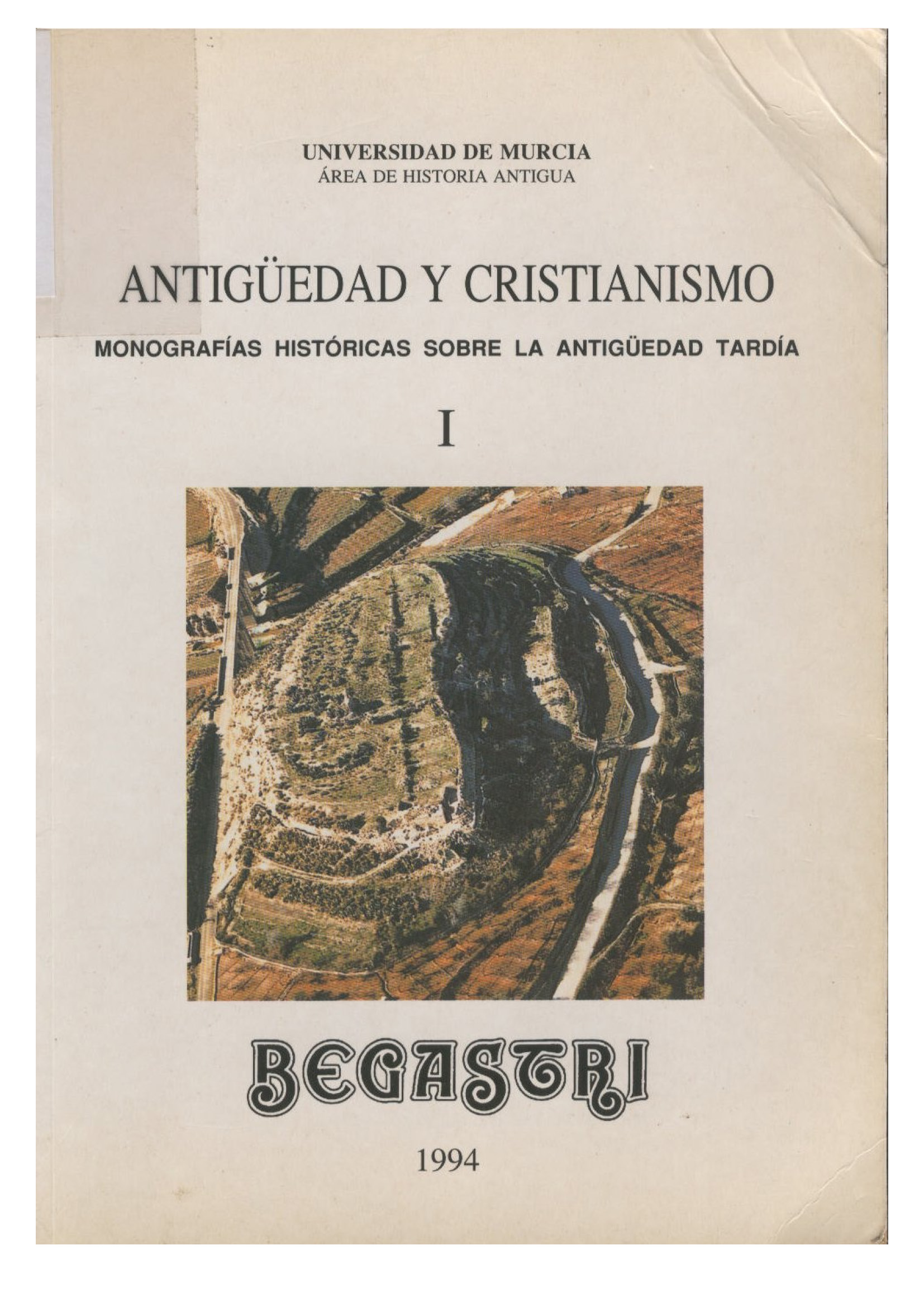Fortificaciones y puerta de Begastri
Abstract
Begastri tuvo una larga historia. Durante siglos fue una ciudad ibérica y vivió, al parecer, sin murallas, o por lo menos hasta ahora no han aparecido. Así como tampoco hay testimonios claros de que hubiera fortificaciones durante la época republicana o el Alto Imperio Romano. Es un tema, de todas formas, que habrá que tener siempre abierto y estar atentos a los datos que el avance de las excavaciones suministre ya que es raro que si no había preocupaciones defensivas la ciudad surgiera en lo alto de un cabezo; pero hoy por hoy las fuertes murallas que van apareciendo pertenecen a la época tardo romana. Son defensas surgidas tras de la crisis del siglo III y construidas aprisa reempleando lo que antes debió formar parte de diversos edificios. Por ello cuando a lo largo del presente trabajo hablemos de la ciudad fortificada de Begastri nos referiremos propiamente a la ciudad en su época tardo romana.
Downloads
-
Abstract240
-
PDF (Español (España))116
1. The authors non-exclusively assign the exploitation rights (reproduction, distribution, communication and transformation) to the magazine.
2. The works published in this magazine are subject to the Attribution-ShareAlike 4.0 International license (CC By SA 4.0). Therefore, they can be copied, used, disseminated, transmitted and publicly displayed, provided that:
i) the authorship and the original source of its publication (journal, editorial and URL of the work) are cited, thus allowing its recognition.
ii) it is allowed to remix, transform or create from the material while maintaining the same license as the original.
Note: Articles prior to 2022 incorrectly display the CC by SA license in the abstract page. They are under a CC by NC ND license as embedded in the article pdfs. Articles published in 2022 and after are under the CC by SA license.

3. Self-archiving conditions. Authors are allowed and encouraged to electronically disseminate the pre-print (version before being evaluated) and/or post-print (version evaluated and accepted for publication) versions of their works before publication, as it favors their publication. Earlier circulation and diffusion and with it a possible increase in its citation and reach among the academic community. Color RoMEO: verde.
























